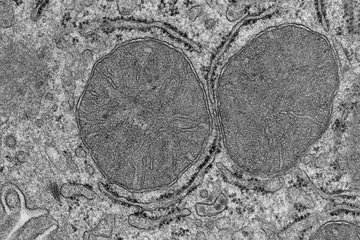How does the brain flexibly process complex information?
A new study reveals the mechanisms that support our brain’s ability to adapt the way it processes information in our environment
Human decision-making depends on the flexible processing of complex information, but how the brain may adapt processing to momentary task demands has remained unclear. Researchers from the Max Planck Institute for Human Development have now outlined several crucial neural processes revealing that our brain networks may rapidly and flexibly shift from a rhythmic to a “noisy” state when the need to process information increases.

Driving a car, deliberating over different financial options, or even pondering different life paths requires us to process an overwhelming amount of information. But not all decisions pose equal demands. In some situations, decisions are easier because we already know which pieces of information are relevant. In other situations, uncertainty about which information is relevant for our decision requires us to get a broader picture of all available information sources. The mechanisms by which the brain flexibly adapts information processing in such situations were previously unknown.
To reveal these mechanisms, researchers from the Lifespan Neural Dynamics Group (LNDG) at the Max Planck Institute for Human Development and the Max Planck UCL Centre for Computational Psychiatry and Ageing Research designed a visual task. Participants were asked to view a moving cloud of small squares that differed from each other along the four visual dimensions: color, size, brightness, and movement direction. Participants were then asked a question about one of the four visual dimensions. For example, “Were more squares moving to the left, or right?”. Prior to seeing the squares, the study authors manipulated “uncertainty” by informing participants which feature(s) they could be asked about; the more features that were relevant, the more uncertain participants were expected to become about which features to focus upon. Throughout the task, brain activity was measured using electroencephalography (EEG) and functional magnetic resonance imaging (fMRI).
First, the authors found that when participants were more uncertain about the relevant feature in the upcoming choice, participants’ EEG signals shifted from a rhythmic mode (present when participants could focus on a single feature) to a more arrhythmic, “noisy” mode. “Brain rhythms may be particularly useful when we need to select relevant over irrelevant inputs, while increased neural ‘noise‘ could make our brains more receptive to multiple sources of information. Our results suggest that the ability to shift back and forth between these rhythmic and ‘noisy’ states may enable flexible information processing in the human brain,” says Julian Q. Kosciessa, LNDG post-doc and the article’s first author.
Additionally, the authors found that the extent to which participants shifted from a rhythmic to a noisy mode in their EEG signals was dominantly coupled with increased fMRI activity in the thalamus, a deep brain structure largely inaccessible by EEG. The thalamus is often thought of primarily as an interface for sensory and motor signals, while its potential role in flexibility has remained elusive. The findings of the study may thus have broad implications for our current understanding of the brain structures required for us to adapt to an ever-changing world. “When neuroscientists think about how the brain enables behavioral flexibility, we often focus exclusively on networks in the cortex, while the thalamus is traditionally considered a simple relay for sensorimotor information. Instead, our results argue that the thalamus may support neural dynamics in general and could optimize brain states according to environmental demands, allowing us to make better decisions,” says Douglas Garrett, senior author of the study and LNDG group leader.
In the next phases of their research, the authors plan to investigate the underlying neurochemical bases of how the thalamus permits shifts in neural dynamics, and whether such shifts can be “tuned” by stimulating the thalamus using weak electrical currents.












